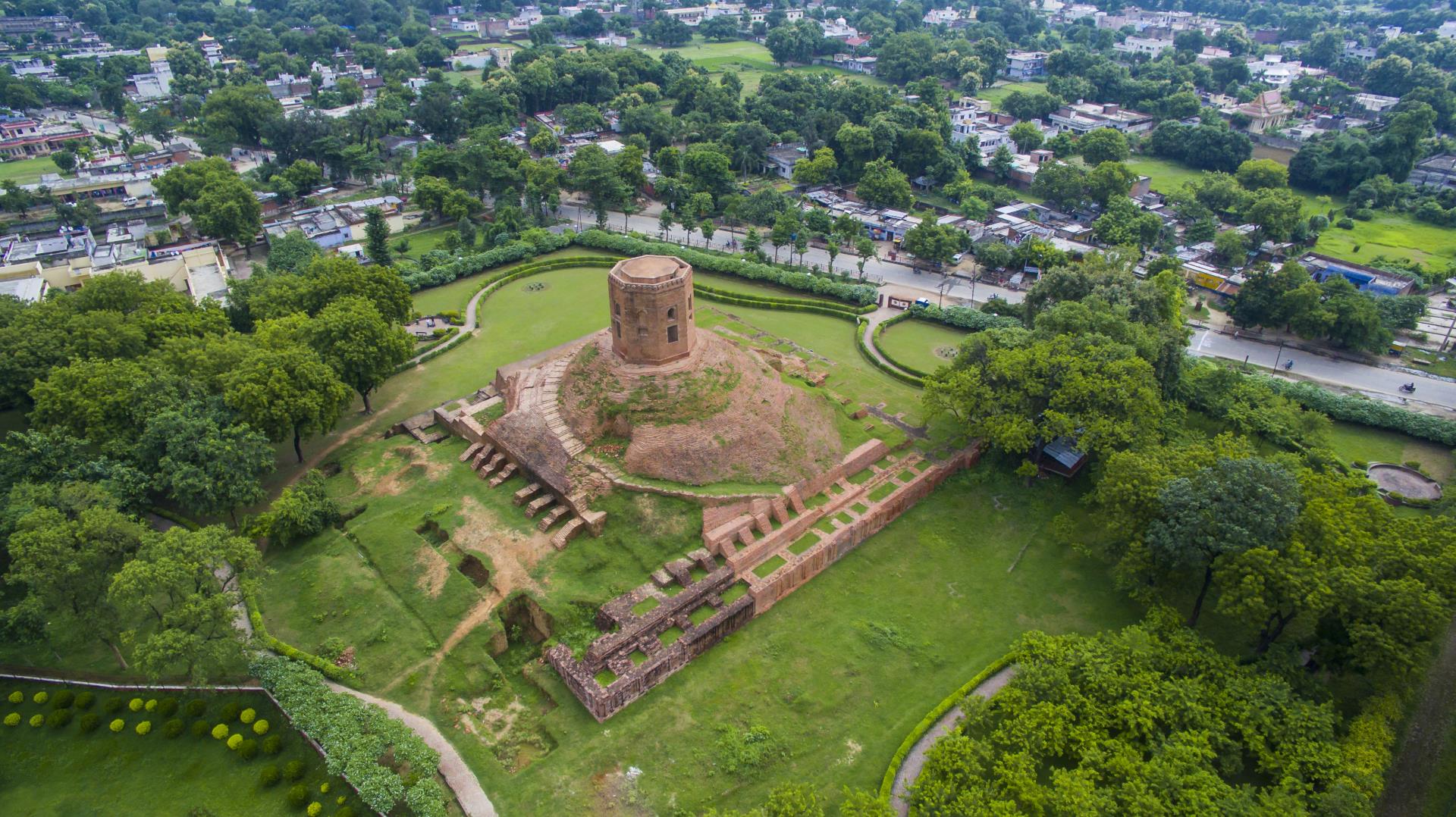
ABOUT THE
Destination
Situated in Uttar Pradesh, around 10 km from Varanasi, Sarnath is a tranquil tree-lined town, strewn with ruins of early monuments and glistening new structures dedicated to Lord Buddha. Famous as a pilgrimage site for Jains and Buddhists, it was here in around 530 BC that Gautam Buddha had preached his first sermon just five weeks after he attained enlightenment.
After his enlightenment in Bodhgaya, Lord Buddha reached Sarnath, believed to have walked through air to cross the River Ganga as he didn’t have the money to pay the boatman. Here, at a deer park he made his first discourse. Sanctified as Maha Dharma Chakra Pravartan or the Wheel of Dharma, it was in Sarnath that he explained the meaning of the “Middle Path” to his first five disciples. Buddhist lore says these five men were Buddha’s companions in penance before he left for Bodhgaya. But when they met him again in Sarnath, they mistook his halo as a sign of a luxurious life. They accused him of letting go of a monk’s austerities. The Buddha explained to them that he had given up the extreme of luxury as well as asceticism. “I have discovered the Middle Way", he had said, turning these five into true followers of Buddhism.
In Buddhist manuscripts, Sarnath is also known as Mrigadava or Mrigadaya, or a place where herds of deer roamed freely. A story says that while on a hunting campaign, the local king was following a doe to kill it. Buddha disguised himself as a deer and offered his life instead, to protect the animal. Inspired by this selfless act, the king declared that a park would be created to protect the deer. This inspired the name Saranganath, or “Lord of the Deer”, from which was derived Sarnath. It was also called Isipatana, a place where holy men or devas fell or descended on earth.
Ashoka, the great Mauryan emperor, who lived about 200 years after Buddha, and was a follower of Buddhism, erected several monuments in Sarnath, out of which some remain even today. Sarnath flourished for centuries as a site of education and religious importance. Chinese traveller Fa Hien, who visited Sarnath in 5th century, during the reign of Gupta emperor Chandragupta, says the place had four magnificent stupas and several monasteries for Buddhist scholars. In the 7th century, when another Chinese traveller Hiuen Tsang visited Sarnath, he found 3,000 Buddhist monks living here. In the 12th century, Sarnath was attacked and razed by invaders, only to be discovered after excavations were made in 1830s. Sarnath is also considered holy by Jains as according to Jainism, the 11th Jain tirthankara was born near Sarnath at Singhpur village.
Today, most of the ruins are found in one place, as pilgrims from across the world throng the brick lined, meandering paths between lush green lawns and old and new monuments. During Buddha Purnima, Sarnath becomes a bustling hub of festivities, attracting thousands of Buddhist devotees.
ATTRACTIONS

Dhamek Stupa
Built several times over, the stupa is said to mark the spot in the deer park where Lord Buddha gave his first sermon.
Ashoka Pillar
Topped by the famous four-lion capital, which is the National Emblem of India it symbolises both Ashoka's imperial rule and the kingship of the Buddha.


Chaukhandi Stupa
Originally been built by emperor Ashoka in the 5th century. It is said to mark the spot where Lord Buddha met his five followers.

Mulagandha Kuti Vihar
A beautiful turreted temple built in 1931 by the Mahabodhi Society. It has a rich repository of life-like frescoes by famous Japanese painter Kosetsu Nosu.
Sarnath Archaeological Museum
This regal museum set in a sprawling compound was completed in 1910. As it houses a wealth of Buddhist artifacts it is built to resemble a Buddhist monastery.


International Temples
Sarnath also has a host of magnificent temples, these include a Thai temple, a Burmese Temple, a Japanese temple and a Chinese temple.
HOW TO
REACH
By Bus
Regular buses and cabs ply from Varanasi to Sarnath, which is a day’s excursion
By Train
The nearest railway station is about 10 km away in Varanasi
By Air
The nearest airport is around 25 km away in Varanasi